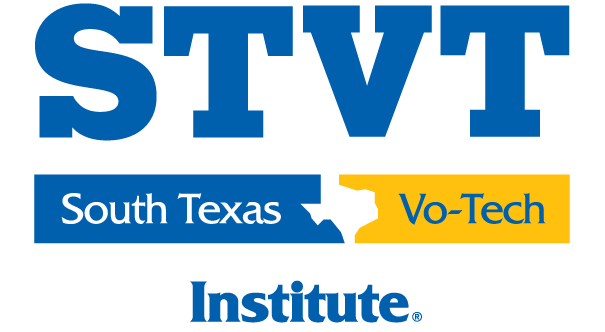Graduation caps have been tossed, yearbooks signed, and high school is officially behind you. Now comes the question that might feel both exciting and overwhelming: “What’s next?” If you’re feeling uncertain about your future path, you’re not alone. While many of your classmates might be heading straight to four-year universities, that route isn’t the only– or necessarily the best– option for everyone.
At South Texas Vocational Technical Institute (STVT), we believe there are multiple pathways to a successful career. For many students, vocational and technical education can offer a shorter route to rewarding careers. This guide can help you understand your options and make an informed decision about your next steps after high school.
Understanding Today’s Career Landscape
The job market has transformed dramatically over the past decade. Many of today’s most in-demand careers don’t require a traditional four-year degree. The healthcare and construction sectors are experiencing significant growth between 2023 and 2033.
Despite these realities, outdated perceptions about vocational education persist. Many people still believe that trade careers offer limited growth potential or lower salaries—myths that simply don’t match today’s reality. Modern vocational careers can offer advancement opportunities and the satisfaction of learning valuable skills that could be in high demand.
Exploring Your Options After High School
As you consider your next steps, it’s important to understand the full range of options available to you:
Traditional Four-Year College
A bachelor’s degree remains the right choice for many career fields, particularly like engineering, education, or accounting. Four-year colleges offer broad educational experiences and can be the best path if you:
- Have a specific career goal that requires a bachelor’s degree
- Want to explore different subjects before committing to a career path
- Value the traditional college experience and campus life
- Have access to financial resources or scholarships to manage the cost
Vocational and Technical Education
Vocational education focuses on practical skills training for specific career fields. Programs typically range from several months to two years and can include:
- Certificate programs that focus on specific skills or programs that focus on preparing graduates for certification tests.*
- Diploma programs that can provide hands-on training in a field
- Associate degree programs that can combine technical training with some general education
These programs emphasize hands-on learning in environments that simulate real workplaces. Students may spend less time in traditional classrooms and more time developing practical skills they can use every day in their future careers.
Apprenticeships and On-the-Job Training
Some industries offer apprenticeship programs that combine paid work experience with classroom instruction. These programs can allow you to:
- Earn while you learn
- Gain direct experience under the guidance of experienced professionals
- Build relationships with potential employers
- Avoid or minimize educational debt
Apprenticeships are particularly common in skilled trades like electrical work and construction, but they can take years to finish. Skilled trades programs offered at vocational schools usually allow you to finish training in less than two years.
Military Service
Military service offers another path to skill development and career training. The various branches of the armed forces can provide:
- Training in hundreds of career specialties
- Educational benefits that can be used during or after service
- Structured advancement opportunities
- Development of leadership and teamwork skills
Gap Year Options
Taking a structured gap year can help you gain experience and clarity about your interests. Productive gap years might include:
- Working in fields you’re considering to gain firsthand experience
- Volunteering with organizations aligned with your interests
- Participating in structured gap year programs
- Developing specific skills through short-term courses or certifications
Remember that these options aren’t mutually exclusive. Many students combine approaches—for example, working part-time while attending a technical program, or starting with a certificate program before deciding whether to continue toward an associate degree.
Self-Assessment: Finding What’s Right for You
Making an informed career decision starts with understanding yourself—your interests, strengths, values, and preferences. Ask yourself these questions:
- What activities do you enjoy? Do you prefer working with your hands, solving problems, helping others, or creating things?
- What environments energize you? Do you thrive in fast-paced settings, prefer structured environments, or enjoy working outdoors?
- What values are important to you in a career? Consider factors like stability, helping others, creativity, independence, or financial rewards.
- What skills come naturally to you? Think about both technical abilities and soft skills like communication or organization.
- What lifestyle do you want? Consider factors like work schedule, location flexibility, and work-life balance.
Several resources can help you explore careers that align with your preferences:
- Career aptitude tests (many are available online for free)
- Your high school guidance counselor
- Career services offices at local colleges and technical schools
- The Texas Workforce Commission’s career exploration tools
- Informational interviews with professionals in fields that interest you
Remember that career exploration isn’t just about reading descriptions; it’s about experiencing possibilities firsthand whenever you can. Job shadowing, volunteering, part-time work, and informational interviews can provide valuable insights into whether a career path might be right for you.
The Practical Benefits of Vocational Education
For many high school graduates, vocational education offers significant practical advantages:
Faster Entry into the Workforce
Many vocational programs can be completed in 15 months or less, compared to four or more years for a bachelor’s degree. This means you can:
- Start earning a salary sooner
- Begin building career experience earlier
- Reduce the opportunity cost of time spent in school
Lower Educational Costs
The average cost of vocational programs is significantly lower than four-year degrees. Additionally:
- Shorter programs can mean less time paying for education
- Many programs offer flexible scheduling that can allow you to work while studying
- Financial aid, including grants and scholarships, may be available for qualified students
- The focused curriculum can eliminate paying for courses unrelated to your career goals
Direct Skill Development
Vocational programs are generally designed with input from industry professionals so students learn what employers are looking for. Benefits can include:
- Hands-on training with the same tools and technology used in the workplace
- Instructors with real-world experience in the field
- Curriculum that adapts quickly to industry changes
- Skills that translate directly to job readiness
Industry Connections
Many vocational schools maintain strong relationships with local employers, which could provide:
- Internship and externship opportunities
- Job placement assistance
- Networking connections with potential employers
- Insights into local hiring trends and employer needs
High-Demand Vocational Careers in Texas
Texas offers strong opportunities in several vocational fields. Here are some high-demand career areas to consider:
Healthcare Careers
The healthcare industry continues to grow rapidly across the nation, with opportunities including:
- Medical Assistant: Perform administrative and clinical tasks in healthcare settings
- Dental Assistant: Support dentists during procedures and manage office tasks
- Medical Billing and Coding Specialist: Manage healthcare data and insurance claims
- Pharmacy Technician: Assist pharmacists in dispensing medications
Healthcare roles typically offer stable employment, opportunities for advancement, and the satisfaction of helping others.
Skilled Trades
The efforts of skilled trades workers have lasting impacts on our everyday lives, including those of:
- HVAC Technicians: Install and maintain heating, ventilation, and air conditioning systems
- Automotive Technician: Diagnose, repair, and maintain vehicles
- Heavy-Truck Drivers: Transport goods across the country
These careers can offer competitive pay and the satisfaction of creating or fixing tangible things.
Each of these career paths can offer clear advancement paths as you gain experience and additional certifications.
Making an Informed Decision: A Step-by-Step Approach
Choosing your next steps after high school deserves a thoughtful approach. Consider following this process:
1. Research Phase
- Gather information about careers that interest you
- Research educational requirements for those careers
- Explore schools and programs in your area
- Talk to people working in fields you’re considering
2. Exploration Phase
- Visit campuses and training facilities
- Attend information sessions and open houses
- Arrange job shadowing if possible
- Ask detailed questions about programs and outcomes
3. Assessment Phase
- Compare options based on your personal criteria
- Consider factors like cost, time commitment, and job prospects
- Evaluate how well each option aligns with your interests and goals
- Discuss options with trusted mentors or family members
4. Decision Phase
- Narrow your choices to your top option
- Create a plan for the next steps
- Identify potential obstacles and solutions
- Set a timeline for implementation
5. Action Phase
- Complete applications
- Apply for financial aid
- Make arrangements for transportation, housing, etc.
- Prepare for your new beginning
Throughout this process, remember that you’re making an important decision, but not an irreversible one. Many successful professionals change directions several times throughout their careers. The most important thing is to make a thoughtful choice based on the information available to you now.
Overcoming Common Concerns and Obstacles
As you consider vocational education, you might encounter some challenges or concerns:
Family Expectations
If your family expects you to pursue a traditional college path, open a conversation about your interests and the realities of today’s job market. Share information about the opportunities and benefits of vocational education, and explain how your chosen path aligns with your strengths and goals.
Financial Concerns
Educational costs are a legitimate concern. Explore these resources for managing the investment:
- Federal financial aid (complete the FAFSA)
- Scholarships specific to vocational education
- Payment plans offered by schools
- Employer tuition assistance programs
- State workforce development grants
Many vocational schools have financial aid advisors who can help you navigate these options.
Uncertainty About Your Interests
If you’re unsure about your career interests, consider:
- Taking career assessment tests
- Exploring introductory courses in different fields
- Volunteering or working part-time in areas of interest
- Speaking with career counselors
- Attending career fairs and information sessions
Remember that some uncertainty is normal, and your first step doesn’t have to be your forever career.
Concerns About Perception
Some students worry about how others will view their choice of vocational education. Remember that:
- The perception of vocational education is changing rapidly as skills gaps grow
- Your career satisfaction matters more than others’ opinions
- Many vocational careers offer excellent compensation and stability
- You’re making a practical choice that aligns with real workforce needs
Your Future Is in Your Hands
As you stand at this important crossroads after high school graduation, remember that there are many paths to a successful and fulfilling career. The most important factor is choosing a path that aligns with your interests, strengths, and goals, not following what others expect or what your classmates are doing.
Vocational education offers a practical, efficient route to careers that may have a strong demand and competitive compensation. By focusing on specific skills that employers need, you can prepare for a career that provides both financial stability and personal satisfaction.
At STVT, we’re committed to helping students find and prepare for careers that match their goals and abilities. Our programs are designed with input from industry professionals that can help you develop the skills employers are seeking right now.
Ready to explore your options? We invite you to visit one of our six campus locations throughout Texas to learn more about our programs in healthcare, skilled trades, and business. Our admissions advisors are available to answer your questions and help you determine if vocational education might be the right path for your future.
Remember, this is your journey, and we’re here to help you take the next step with confidence.
Want to learn more about specific career programs? Contact STVT today to schedule a campus tour or speak with an admissions advisor. Call 866-480-9766 or visit www.stvt.edu/request-info to get started.
Blog Disclaimer: Information within this blog is for general information purposes only. STVT does not assume or guarantee certification/licensures, specific job/career positions, income earning potential, or salary expectations based on the programs offered at STVT. Career and program information statements in this blog do not guarantee that programs or other information mentioned are offered at STVT.
STVT does not guarantee third-party certification. Certification requirements for taking and passing certification examinations are not controlled by STVT but by outside agencies and are subject to change by the agencies without notice to STVT. Therefore, STVT cannot guarantee that graduates will be eligible to take certification examinations, regardless of their eligibility status upon enrollment.



